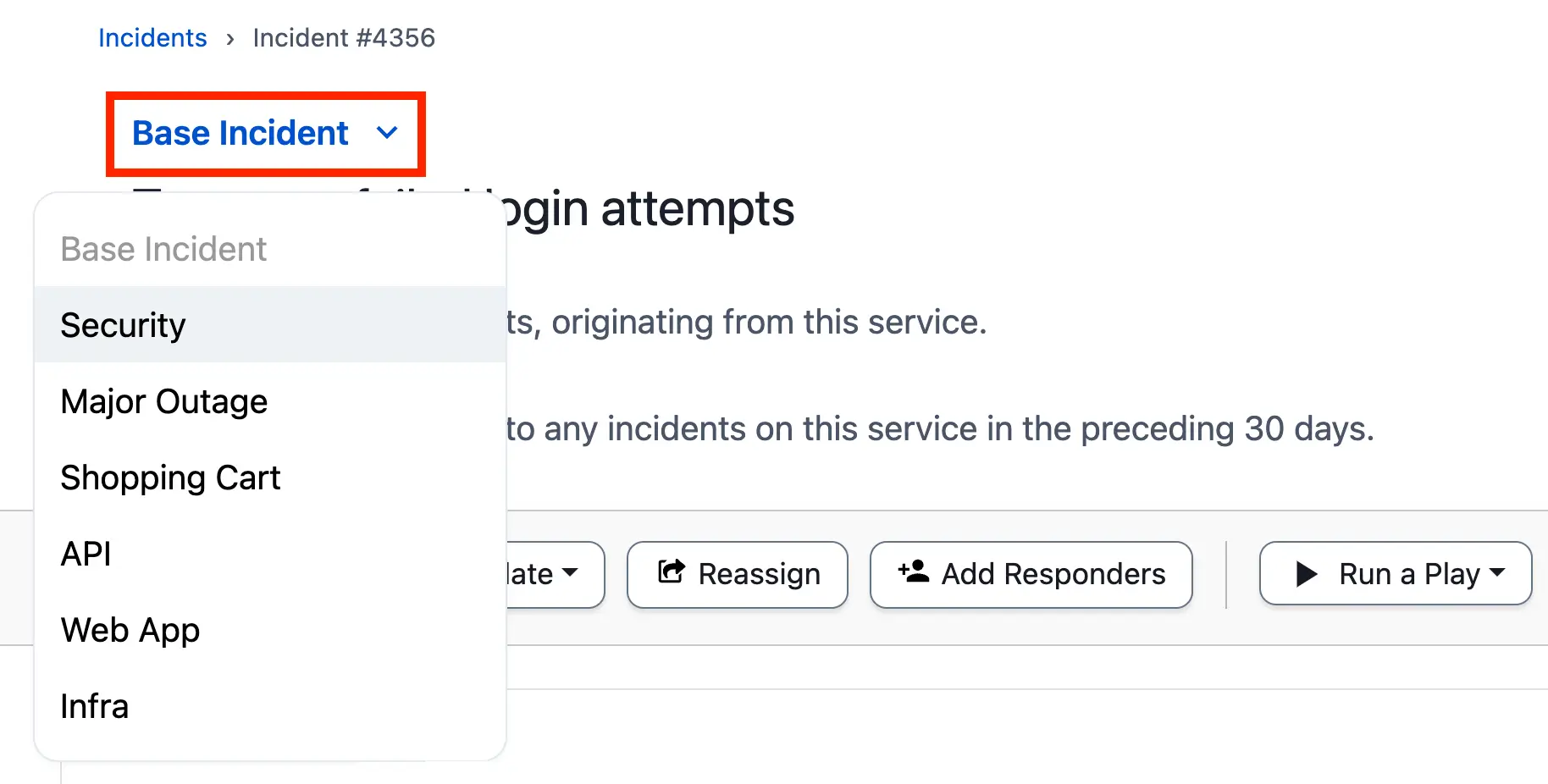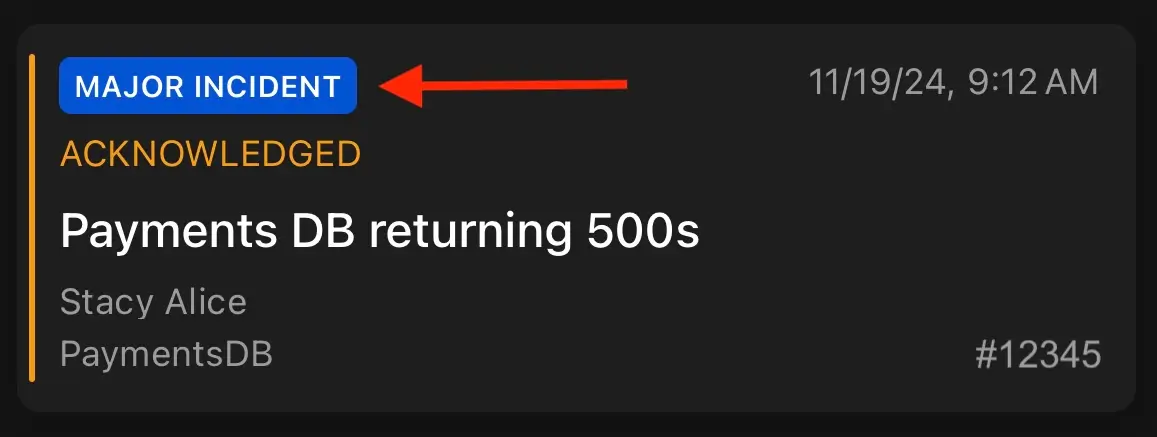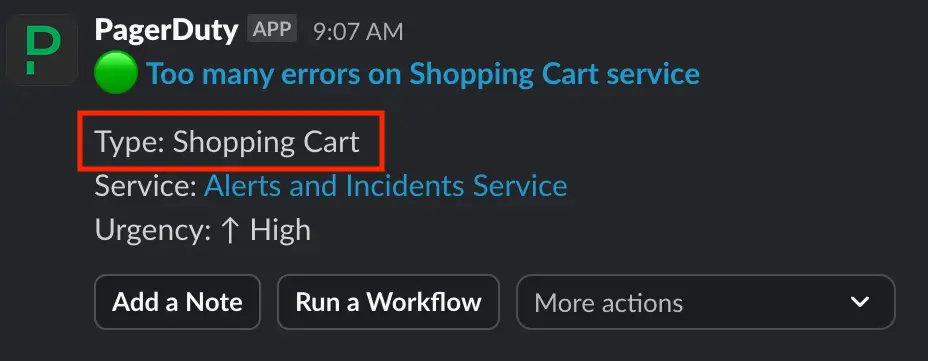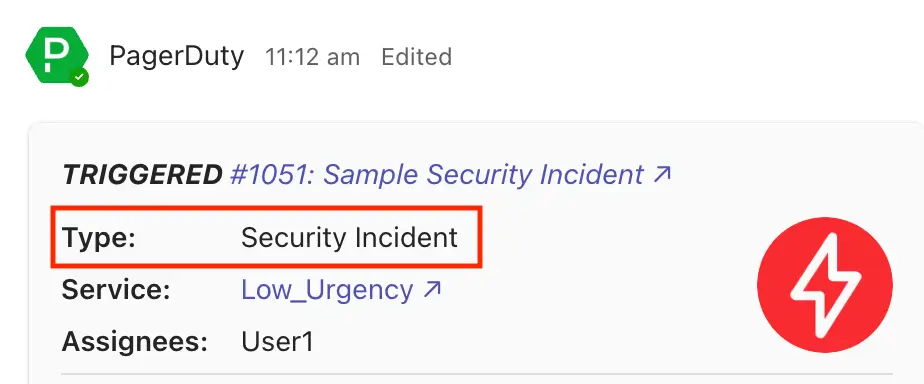Incident Types
Streamline and customize incident management with distinct Incident Types
Within an organization there are often many different types of incidents that demand a unique response process. For example, a major incident typically follows a different process than a security incident or compliance incident. The Incident Types feature allows organizations to create custom types, which determine the set of Custom Fields that are available on an incident, tailored to their diverse response processes. By categorizing incidents, teams can reduce confusion and ensure that they engage the right processes and responders for each incident type, leading to quicker resolution and minimized business impact.
Availability
- Customers on all pricing plans, including legacy plans, have access to the Base Incident and Major Incident Types.
- Customers on current Free, Professional, Business, and Enterprise pricing plans also have access to the Security Incident Type.
- Customers with Business pricing plans can create up to three additional custom Incident Types.
- Customers with Enterprise pricing plans can create up to 100 Incident Types, and with up to 3 levels of nesting.
Please contact our Sales Team to expand your account's Incident Types functionality.
Required User Permissions
- All users, except for Limited Stakeholders, can view Incident Types.
- Any user with permission to create an incident can select an Incident Type at incident creation.
- Users with Responder permissions on an incident can update its type.
- Admins and the Account Owner can create and edit Incident Types.
Incident Type Foundational Concepts
Inheritance
Incident Types use an inheritance model. When you add a new custom field to a type, that field will also be added to all of the type's children. This model provides the flexibility to add custom fields to all incidents in an account, or to concentrate them to a specific incident type.
While creating a new incident type, you will specify a Parent Type, which defines where in the hierarchy the new type will live. You can have at most three levels of inheritance on your account.

Example Incident Type inheritance configurations
Click the checkbox Display Inherited Fields while configuring an Incident Type to view which fields are inherited:

Display inherited fields
Default Incident Types
All pricing plans, including legacy plans, have access to the Base Incident and Major Incident default types. In addition, customers on current Free, Professional, Business, and Enterprise pricing plans have access to Security Incidents, a third default type. These are described below:
- Base Incident - By default, all incidents created are a “Base Incident”. The Base Incident is also always at the top of the inheritance hierarchy. You can use the Base Incident to add fields that should apply globally to all incidents within PagerDuty.
- Major Incident - The Major Incident is used for configuring your major incident response process. You can use this default incident type for things like triggering a major incident workflow, creating custom fields specific to major incidents, and more.
- Security Incident - An incident caused by a potential security threat that requires specialized investigation and response.
Typically these default incident types are configured to work out of the box. However, some customers will need to enable them in order to start creating incidents of that type. See how to Enable an Incident Type.
Configure Incident Types
Create an Incident Type
To create an Incident Type, in the PagerDuty web app:
- Navigate to Incidents Incident Types.
- In the left pane, click New Incident Type.
- Enter the following information:
| Field | Instructions |
|---|---|
| Parent Type | Select an Incident Type to inherit from. |
| Display Name | Enter a user-friendly name to display for this incident type. For example: “Security Incident,” “Legal Incident,” or “Billing Incident.” |
| API Name | Enter a unique name for use with the REST API. This can only contain lowercase letters, numbers and underscores. Note: This value cannot be changed after initial creation. |
| Description | Write a description for the Incident Type. |
| Enable Type | Select Enable or Disable. |
- Click Create.
Add Custom Fields
After creating an Incident Type, you can add custom fields to that type. Please see our Configure Custom Fields article for more information.
Edit Incident Types
- Navigate to Incidents Incident Types and select your preferred Incident Type.
- Make your desired changes (e.g., Add Fields or adjust Settings) and click Save.
Disable or Enable Incident Types
Delete Incident Types
Deleting Incident Types is not supported. You can disable an Incident Type by following the steps below. This will make it unavailable to responders when selecting a type on an incident.
- Navigate to Incidents Incident Types and select any child of the Base Incident type.
- Click the Settings tab and select Disable in the dropdown Enable Incident Type.
- Click Save.
Note: In order to disable an Incident Type, you must also disable any child types.
Set Incident Types on Incidents
Set an Incident Type on a New Incident
Follow the instructions to Trigger an Incident via Web App. While entering the incident's details, make a selection from the Incident Type dropdown.
Change an Existing Incident's Type
Web App
- In the PagerDuty web app, navigate to Incidents and select your preferred incident.
- Above the incident title, select an Incident Type from the dropdown.

Select an Incident Type
- A confirmation modal will display which fields will be added or removed from the incident. Click Change Incident Type to confirm.
Mobile App
- Navigate to Incidents and select your preferred incident.
- In the carousel menu under the Triage tab, scroll and tap Change Type.
- Select your preferred Incident Type, and tap Change Type to confirm.
Slack
- In a dedicated incident channel, enter the
/pd typecommand, or click More Actions on an incident notification and select Change Type. - Select your preferred Incident Type and click Save to confirm.
Microsoft Teams
- On a PagerDuty incident's card, click and select Change Type.
- Make a selection from the Incident Type dropdown.
- Click Save.
ServiceNow
You can change the incident’s type from the incident actions menu in ServiceNow after enabling this feature in the integration. Please refer to Advanced ServiceNow Configuration for enablement and configuration steps.
- Navigate to PagerDuty PagerDuty Incidents. Select the incident you would like to update.
- In the top right, select Change Incident Type. If you do not see this option, ensure you have Incident Types enabled in the PagerDuty Settings.
- In the modal that appears, select the desired Incident Type from the dropdown.
- Click Change Incident Type. You should see a message in ServiceNow indicating the type updated successfully.
API
You can update an incident’s type using the Update Incident API endpoint.
Incident Workflows
You can update an incident's type using Incident Workflows with the Update Incident Type action.
View Incident Types on Incidents
Web App
Incident Types are viewable on:
- The Incidents page under the Type column.
- The incident details page directly above the incident title.

Incident Type on Web App Incidents Page

Incident Type on Web App Incident Details
Mobile App
Incident Types are viewable on:
- The Incidents page directly above the incident status (e.g., above “Triggered” or “Acknowledged”).
- The incident details page directly above the incident status.

Incident Type on Mobile Incidents Page

Incident Type on Mobile Incident Details
Slack
Incident Types are viewable on incident notifications under the Type heading.

Incident Type on Slack Incident Notification
Microsoft Teams
In Microsoft Teams, Incident Types are viewable on an incident notification under the Type heading.

Incident Type on Microsoft Teams Incident Notification
ServiceNow
Incident Types are viewable on the ServiceNow incident after enabling this feature in the integration. Please refer to Advanced ServiceNow Configuration for enablement and configuration steps.

Incident Type on ServiceNow Incident Record
FAQ
When is a good time to use Incident Types?
A good time to use Incident Types is whenever there is a unique incident process to follow. Your organization's process for major incidents, including required metadata to capture and remediation steps, is likely very different than the one for lower severity incidents. Incident Types are ideal for guiding responders through these differences and capturing variations in response processes.
There are two main categories for when different processes (i.e., Incident Types) are relevant:
- Organizational structure: Within scaled companies, organizational structure frequently defines where one process stops and another one starts. Within these businesses, one part of the organization may look to follow a different process than other areas of the company. In these scenarios, it often makes sense to define an Incident Type that aligns with each business unit's processes.
- Business impact: Another common use case for an Incident Type is a security incident. Unlike in the organizational structure example above, security incidents may follow a consistent process across all parts of the organization. However, their process may vary from other incidents, such as a major incident.
Can I trigger Incident Workflows conditionally based on Incident Type?
Yes. From Incident Workflows, you can use the Conditional Trigger to trigger a workflow for specific Incident Types. For example, you could trigger a Major Incident Workflow whenever a Major Incident triggers.
Updated 6 months ago
